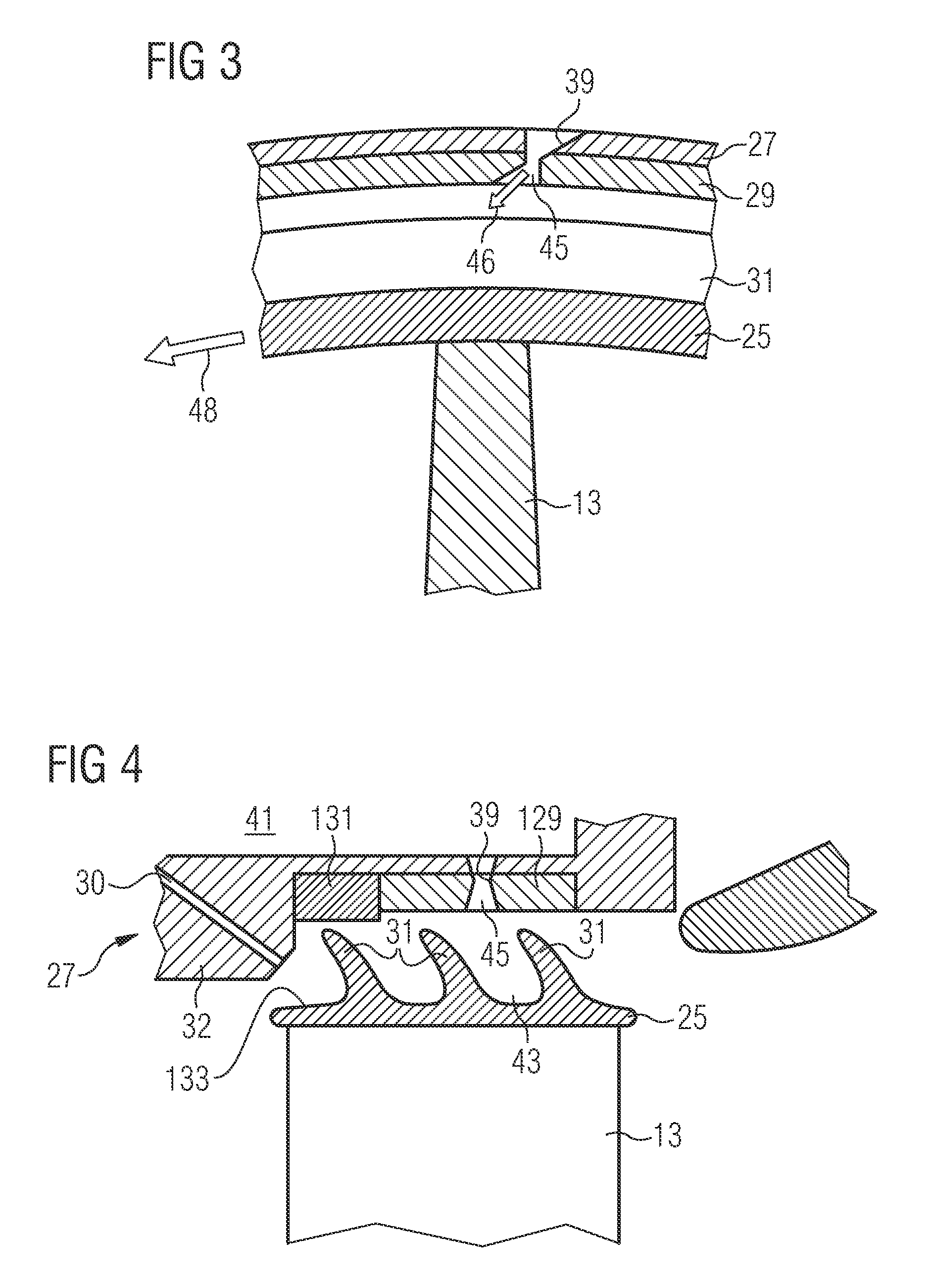Turbine arrangement and method of cooling a shroud located at the tip of a turbine blade
a technology of turbine blades and shrouds, which is applied in the direction of machines/engines, stators, liquid fuel engines, etc., can solve the problems of reducing the capability of heat dissipation from the shroud, and achieve the effects of reducing the ability of dissipation of heat, reducing the warming of gas, and improving cooling efficiency
- Summary
- Abstract
- Description
- Claims
- Application Information
AI Technical Summary
Benefits of technology
Problems solved by technology
Method used
Image
Examples
Embodiment Construction
[0021]FIG. 1 shows, in a highly schematic view, a gas turbine engine 1 comprising a compressor section 3, a combustor section 5 and a turbine section 7. A rotor 9 extends through all sections and comprises, in the compressor section 3, rows of compressor blades 11 and, in the turbine section 7, rows of turbine blades 13 which may be equipped with shrouds at their tips. Between neighbouring rows of compressor blades 11 and between neighbouring rows of turbine blades 13 rows of compressor vanes 15 and turbine vanes 17, respectively, extend from a stator or housing 19 of the gas turbine engine 1 radially inwards towards the rotor 9.
[0022]In operation of the gas turbine engine 1 air is taken in through an air inlet 21 of the compressor section 3. The air is compressed and led towards the combustor section 5 by the rotating compressor blades 11. In the combustor section 5 the air is mixed with a gaseous or liquid fuel and the mixture is burnt. The hot and pressurised combustion gas resul...
PUM
 Login to View More
Login to View More Abstract
Description
Claims
Application Information
 Login to View More
Login to View More - R&D
- Intellectual Property
- Life Sciences
- Materials
- Tech Scout
- Unparalleled Data Quality
- Higher Quality Content
- 60% Fewer Hallucinations
Browse by: Latest US Patents, China's latest patents, Technical Efficacy Thesaurus, Application Domain, Technology Topic, Popular Technical Reports.
© 2025 PatSnap. All rights reserved.Legal|Privacy policy|Modern Slavery Act Transparency Statement|Sitemap|About US| Contact US: help@patsnap.com



